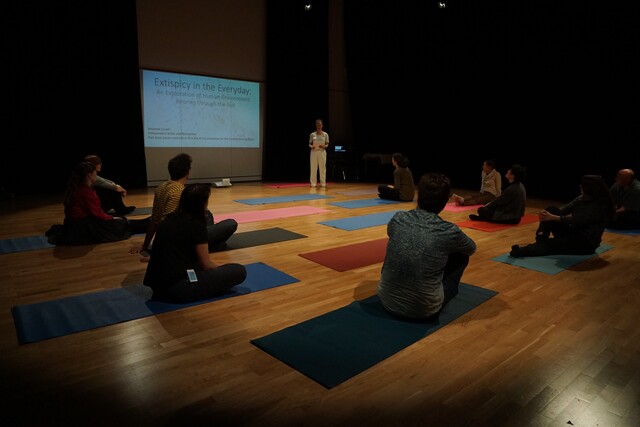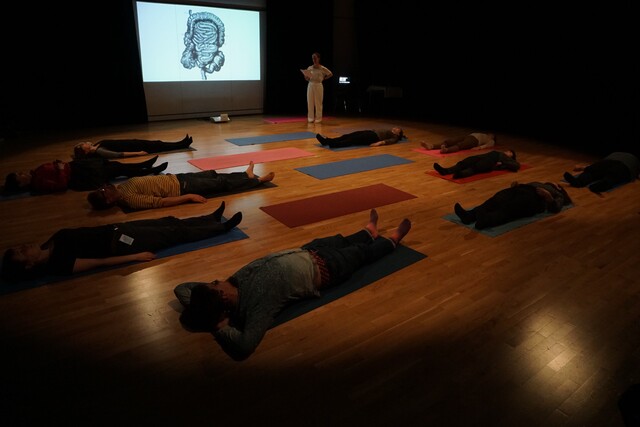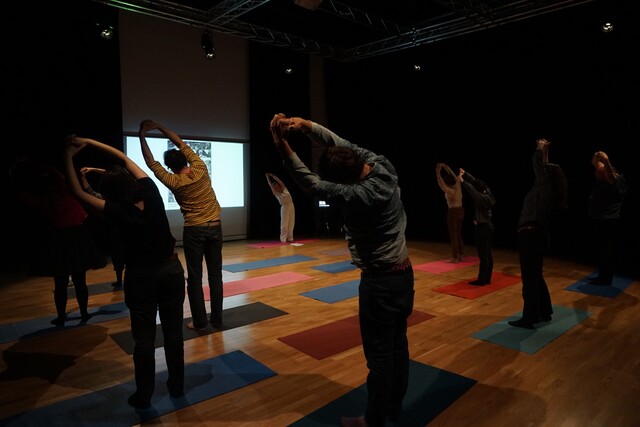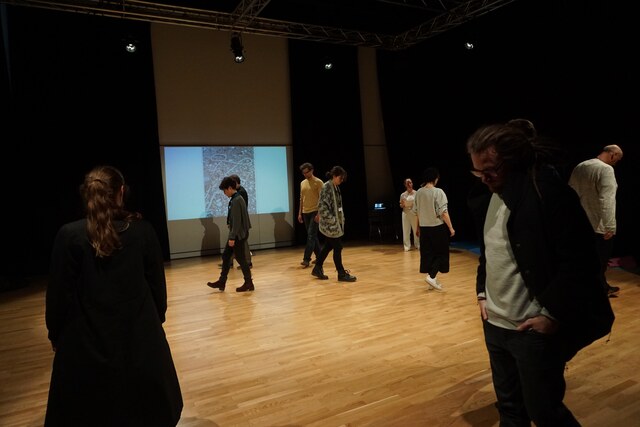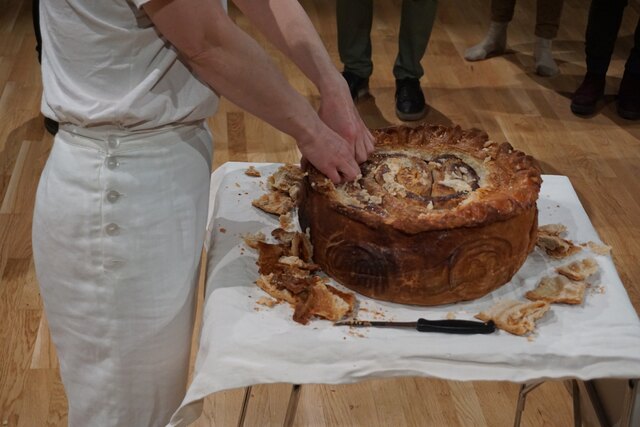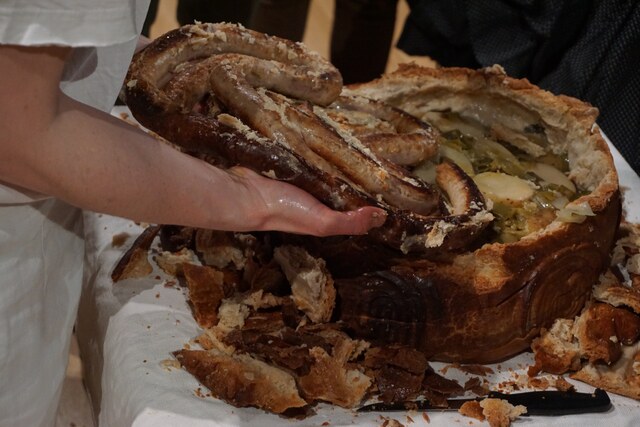Extispicy in the Everyday: An Exploration of Human-Environment Binaries through the Gut explored the conference theme, Regeneration: Artistic Research as a Process of Becoming and particularly, as Donna Haraway (2016) would say, ‘a becoming with’. Drawing on the ancient practice of extispicy, divination using the entrails, participants enacted, experienced, and materially investigated theories of interconnectedness, which problematize thresholds between bodies, environment, and food to re-conceptualise these seemingly boundaried entities.
Drawing on the emerging scene of multispecies ethnography, ideas of becoming, and particularly becoming-with, is described by Eben Kirksey and Stefan Helmreich as ‘new kinds of relations emerging from nonhierarchical alliances, symbiotic attachments, and the mingling of creative agents’, which is loosening the grip of anthropocentrism (2010, 546). ‘If we appreciate the foolishness of human exceptionalism’, Haraway proposes, ‘then we know that becoming is always becoming with—in a contact zone where the outcome, where who is in the world, is at stake’ (Haraway 2008, 244). And I propose with the help of political theorist Jane Bennett in her book, Vibrant Matter: A Political Ecology of Things, that becomings-with are not limited to encounters with human and non-human animals, but are also across, and with, non-living materials. Such matter, contains ‘thing-power arise[ing] from bodies inorganic as well as organic’ (7) […] which ‘can inspire a greater sense of the extent to which all bodies are kin in the sense of inextricably enmeshed in a dense network of relations’ (Bennett, 13).
Extispicy in the Everyday... draws on the ancient practice of extispicy, divination using the entrails, and is reinterpreted in this workshop, through ordinary daily actions, exercises/postures/stretching, walking, noticing, collecting, photography, the cutting open and serving of a pie, and commensality (eating together).

